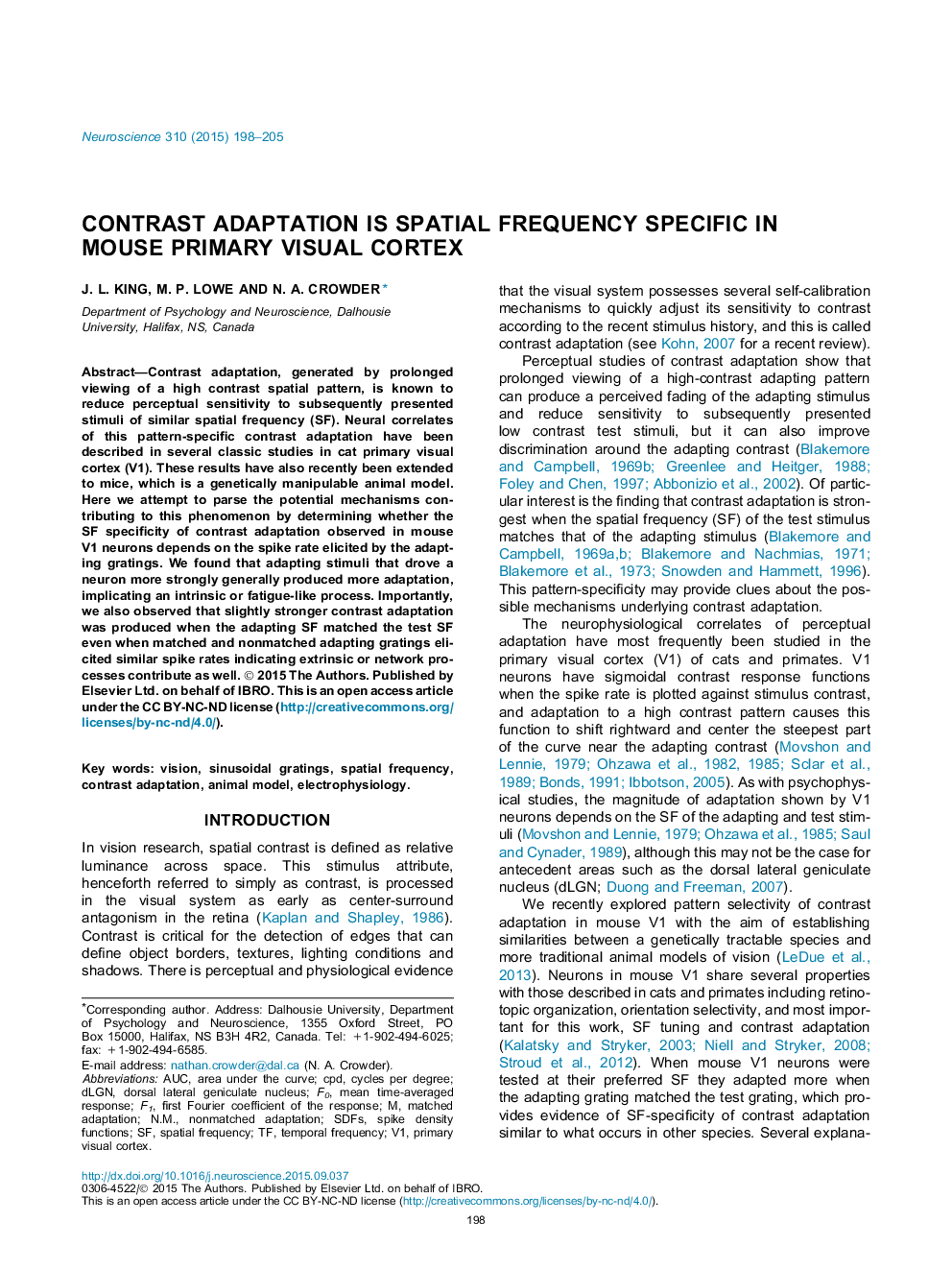| کد مقاله | کد نشریه | سال انتشار | مقاله انگلیسی | نسخه تمام متن |
|---|---|---|---|---|
| 6271598 | 1614766 | 2015 | 8 صفحه PDF | دانلود رایگان |
- Perceptually, contrast adaptation is spatial frequency (SF) specific.
- Contrast adaptation in mouse V1 is strongest when the adapt and test stimuli match.
- SF specificity of adaptation depends on neural spike rate and network mechanisms.
Contrast adaptation, generated by prolonged viewing of a high contrast spatial pattern, is known to reduce perceptual sensitivity to subsequently presented stimuli of similar spatial frequency (SF). Neural correlates of this pattern-specific contrast adaptation have been described in several classic studies in cat primary visual cortex (V1). These results have also recently been extended to mice, which is a genetically manipulable animal model. Here we attempt to parse the potential mechanisms contributing to this phenomenon by determining whether the SF specificity of contrast adaptation observed in mouse V1 neurons depends on the spike rate elicited by the adapting gratings. We found that adapting stimuli that drove a neuron more strongly generally produced more adaptation, implicating an intrinsic or fatigue-like process. Importantly, we also observed that slightly stronger contrast adaptation was produced when the adapting SF matched the test SF even when matched and nonmatched adapting gratings elicited similar spike rates indicating extrinsic or network processes contribute as well.
Journal: Neuroscience - Volume 310, 3 December 2015, Pages 198-205
